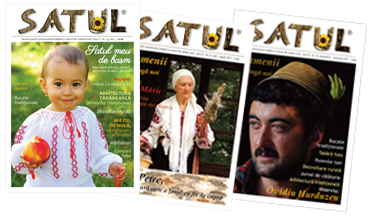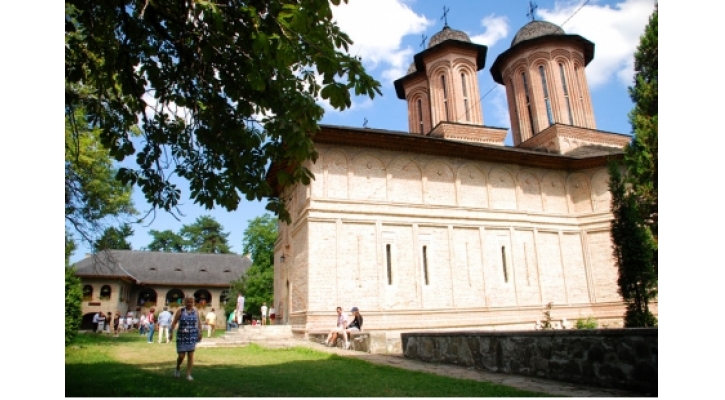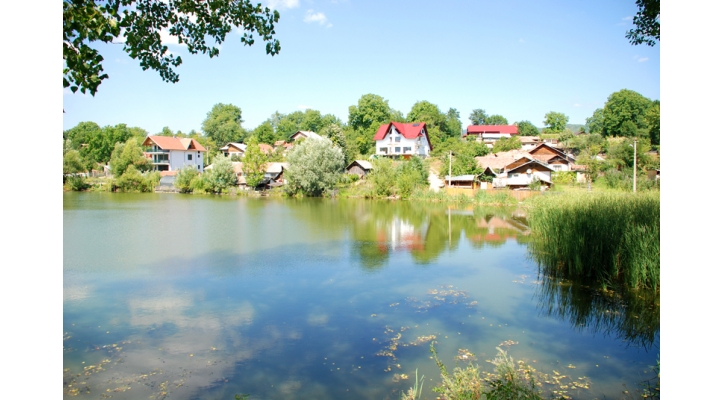Portrait of Brebu Village
The tarred roads turned to dirt as we drove further into Brebu Village, then traffic began to thin, and as I gazed out of the window I caught glimpses of the occasional horse and cart.

The Brebu Monastery, built in the 17th Century. Photo by Ana A. Negru
Far away from the hubbub of busy city life, Brebu is a peaceful village in the northwest of Prahova County. I and my companions were there to take full advantage of Brebu’s excellent fresh fruits by attending the village’s first ever Festivalul Dulceţii, a celebration of sweet jams and preserves.
My first interaction with Brebu’s residents was with Daniela and Gheorghe Rau, owners of a local Bed and Breakfast or 'Pensiunea'. Whilst we explored their home the couple were eager to speak their praises for the small village which, they explained, had a serene atmosphere that attracted tourists to come to Brebu and stay at their Bed and Breakfast. Gheorghe supported this idea with a story about their old neighbour, the famous Romanian folk singer Ducu Bertzi. When the musician was questioned as to why of all the places in the world he had decided to live in the sleepy village of Brebu, Ducu explained that,having quizzed friends who had a good understanding of the environment and healthy living, they had all said that Brebu was the number one place for him to enjoy clean living.
It was very soon into our conversation with Daniela and Gheorghe that I also experienced the hospitality which abounds in Brebu – we were still considered to be strangers by most people’s definitions, yet Daniela and Gheorghe had invited our small group to return to their home later in the afternoon, where they would cook us dinner.
On top of this, Gheorge was more than happy to hop into the car with us to give directions to the orchard where the festival was to be situated.
Before starting to explore the various stands handing out free sample of jams, compotes and syrups, we took the time to explore some of beautiful sights around Brebu. The Brebu Monastery, built in the 17th Century, is one of the few medieval Romanian monuments that has been significantly preserved. Constructed in a triconic formation, the Monastery has one large tower and two smaller ones and is surrounded by walls of burnt brick and stone. The church was still open to the public so I stopped by and had a look around; it was lovely and done inthe typical Romanian Orthodox style that I so admire, its interior covered with vibrant paintings illuminated by candlelight.
Afterwards we took a stroll through an apple and plum orchard to view one of Brebu’s natural attractions, a large blue lakethat is framed by the brightly coloured homes of a few lucky locals.
Eventually we made our way to the festival itself, where in the appropriate setting of a fruit orchard a large amount of stalls had been set up.
My favourite stalls were those set up by the local women who, in typical Brebu style, where there not to sell jam but give out samples and recipes for free.
A village like Brebu embodies all of the benefits of rural life in Romania.
Out here the air is sweet, the food is fresh and plentiful, and the people are warm and friendly. Though times are changing and Romania is headed down the road of modernisation, as long as there are towns like Brebu full of people like Daniela and Gheorghe, people full of pride for their hometown and way of life, Romanian villages will continue to thrive.
By Katherine Clinnick
Photos by Ana A. Negru






